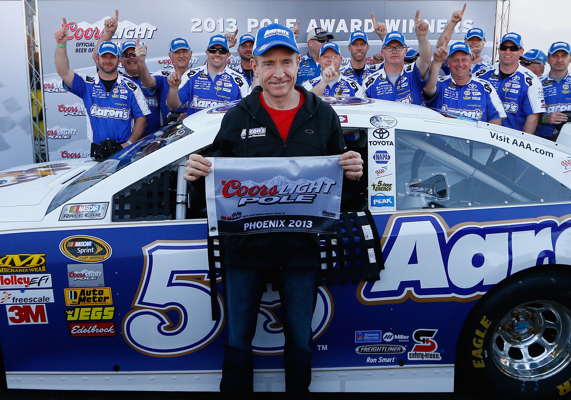It’s been a week since the horrifying accident on the last lap of the Nationwide Series race at Daytona, and NASCAR and the speedway are still hard at work investigating the event.
Kyle Larson’s car went airborne and hit the frontstretch fence near the start finish line in an accident that involved 12 cars. Leader Regan Smith made a block on Brad Keselowski as they came to the checkered flag and the two got together. Those behind them piled on.
All drivers walked away from the accident, but parts of Larson’s car made it through the fence and injured several fans. Speaking to the media Saturday at Phoenix, NASCAR Senior Vice President of racing operations Steve O’Donnell said that all but two fans have been realized from Halifax Medical Center, but there’s optimism those individuals will also be released.
“As everybody knows safety is first and foremost not only for NASCAR and our racetracks, but getting that right and making sure our fans can enjoy the most safe and entertaining environment possible,” O’Donnell said. “I think our history speaks for that. Moving forward based on what happened in Daytona, we met immediately with the folks at Daytona International Speedway.
“We’ve had multiple meetings this week. It’s been a truly collaborative effort with the goal of doing two things: obviously looking at what happened in this incident, but more importantly the go-forward plan of what we can learn and what we want to implement as we go forward.”
Following the crash Larson’s car, along with the pieces of it, were secured by NASCAR and thus far remain in Daytona. The reason was in order for DIS and their experts to have an opportunity to look at the car and conduct their own investigation. The hope is in learning anything that can be used towards the fencing around the racetrack in the future.
Eventually the car will be brought back to Charlotte and NASCAR’s R&D center.

“The first step for us as we reviewed it prior to going to the R&D center, important to note that most of the safety elements in that car did their job,” O’Donnell said. “The driver walked away. The car, however, got up into the fence. Our focus is going to be if the elements in the car did their job, what do we need to do to the impact to the fence, what happened once that car impacted the fence.”
O’Donnell also said that the Turner Scott Motorsports team will be brought in to look at the car. They have yet to be able to see it since the accident, NASCAR immediately impounded it. NASCAR will bring the team in to talk about how they built the car before going ahead and trying to put it back together.
In doing so, they’ll look to see how each part and piece held up in the accident. O’Donnell did reveal though, that the tethers did not break as some had speculated.
The focus however, will not just be on the car. With a race at Talladega approaching in May, anything that can be learned from the Daytona accident would be applied. And not just at the two superspeedway tracks, but at every racetrack with all fences.
“If there’s something that we find out tonight, we’ll apply that. If it’s two months from now, we’ll apply that as well,” he said. “No set timetable.”
In talking about restrictor plates moving forward, O’Donnell said that while nothing can be ruled out, he’s pretty comfortable with running them at Daytona and Talladega. Having raced there for 55 years, he said that they’ve run a number of safe races and hope that what happened on Saturday is a one-time incident.
As the process continues, NASCAR will be working with outside experts as well. O’Donnell mentioned Dr. Dean Sickling and the partnership they have with Indianapolis Motor Speedway where the SAFER barriers came together. Outside experts are able to take the information NASCAR provides and build safer products. The same will be done in this case.
“If you look at the history of safety, where walls have evolved, where we’ve put new foam in, the next evolution is the fence,” said O’Donnell. “It’s all part and parcel because our cars are unique. If you look at a Formula One car versus a NASCAR vehicle, you can say we’ll employ some of the things Formula One does. Car weighs half and the fencing is half.
“How does the car react to the wall? If the car gets into the fence, what load can it take? Having those experts as part of that panel to review it we think will add that much more. There are a lot of engineering firms out there. Some of it, I’ll tell you, is very new. There’s a lot of information out there.
“It’s a great time to bring all the experts together and look at this.”
In addition to talking about the last lap crash, O’Donnell spoke about the accident a few laps prior that injured Michael Annett. He recently had surgery for a dislocated and fractured sternum and will be out of his car indefinitely while he recovers. NASCAR will also be looking at Annett’s car to make sure everything did its job and if there’s anything that can be improved.
O’Donnell also noted, “I think we’re in a better position than ever to work with Michael, talk about what happened, what he experienced and the recovery phase, make sure we’re in tandem. We’ll certainly learn from that. We’ve learned from every incident we’ve had. It’s never something we want to go through.
“I think each time we’ve learned something new to apply to the racecar or the driver safety system.”







